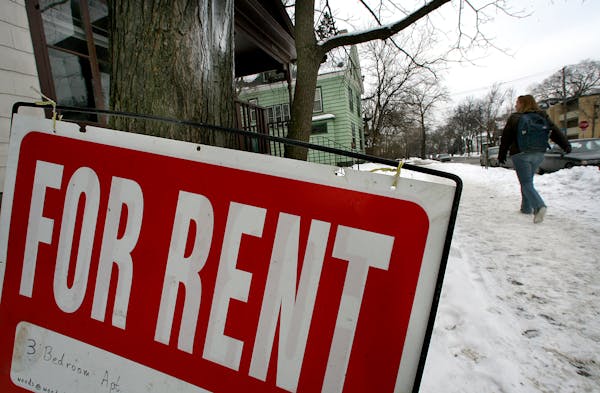ROCHESTER – Area housing officials want to combine forces to prevent residents from losing their homes; work with hospitals to identify residents in crisis, and plan for future homeless shelter needs as buildings age out of use.
These are among the recommendations a group of city, county and nonprofit homeless advocates finalized this month to reduce homelessness in the area.
"It's exciting to actually present this information because of how far we've come," said Mary O'Neil, program manager of Olmsted County's housing stability team.
The workgroup's proposals include storage lockers and pet space for homeless residents; working more closely with hospitals to identify and support homeless residents seeking treatment; creating better ways to respond to homeless encampments, and more rental assistance and transportation for those in need.
Housing officials also say Rochester and Olmsted County need to start planning to expand or move the city's year-round warming center and the the county's Empowering Connections and Housing Outreach (ECHO) Center, as both buildings are aging out of use. Area officials hope to use state housing money to offset future project costs.
Group members initially met in April to address homeless shelter concerns in hopes the Legislature would approve bonding dollars for housing needs in 2022, but lawmakers didn't pass any bonding bills last year.
The group expanded its scope to address gaps in service to homeless residents. Housing officials say there aren't enough resources to help the estimated 200 adults and 400 children who are homeless in Olmsted County. In addition, officials estimate county courts have 15 to 20 evictions filed each week.
The working group recommendations come as communities and advocates around the state push for improved housing access.
The Rochester City Council this month asked city staff to propose ways to encourage more housing development for homes priced below $230,000, as well as changes to the city's land use plan to encourage more affordable and senior housing.
That follows city initiatives the council approved last fall to change Rochester's zoning codes to reduce minimum lot sizes and density limits for certain areas. The new Unified Development Code, which started at the beginning of the year, also cuts down on a few public hearing hurdles to streamline developments.
A 2020 Olmsted County housing study forecast 18,000 more housing units would be needed by 2030, with about 14,000 needed in Rochester alone.
Olmsted County's housing officials have added about 200 units in recent years. County officials plan to develop 120 more units using American Rescue Plan Act funding.
Dave Dunn, director of Olmsted County's Housing and Redevelopment Authority, said the county struggles at times to acquire property ahead of private developers.
"We get beat to the punch by investors who … can just pay cash versus the process and protocols that we have," he said.
Housing staff presented their recommendations to council members and the Olmsted County Board in early February but didn't yet offer concrete proposals to take action.
O'Neil and Taryn Edens, the city of Rochester's housing manager, said housing officials are first working to build a multi-agency group to streamline homeless services and better respond to residents in crisis.
Olmsted County Commissioner Sheila Kiskaden said she and other board members were ready to potentially fund specific items staff proposed.
"But we need to do the preliminary work now," she said.

The Borealis train makes its maiden voyage Tuesday from Minnesota to Chicago

Minnesota's child protection system needs fixes. Legislators are starting with these changes.

Bring what? Did Edwards give state tourism new catchphrase?

No. 1 in baseball Metro Top 10 is there by a wide margin

